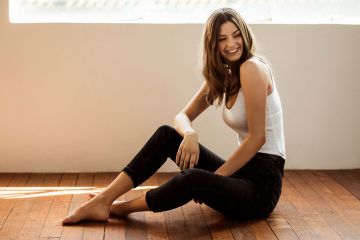The Beginner's Overview to Product Photography
If a photo is worth a thousand words, a spectacular product photo deserves a thousand web site visits. Although I don't have data to back up that statement (yet), product photography can be extremely valuable to your ecommerce web site strategy.
To reach your target market participants that choose purchasing online, you also need to give your target market clear, distinctive images of your items.
However product photography isn't as simple as directing and firing. Even the most fundamental products require the appropriate devices, lights, and room to create stunning photos that sell consumers right from the acquisition page.
6 Product Photography Tips (and Instances) for Taking Pictures That Offer
Right here are the suggestions, instances, and also products you'll require to effectively photo and market your products in a way that makes your site visitors and also leads intend to transform.
1. Don't be afraid to utilize your mobile phone's video camera.
This is the component where I'm supposed to encourage you to invest in a high-end, 50-megapixel (MP) camera with a 100-millimeter screw-on lens. But I'm not going to do that.
If you currently possess a camera that fits this description, benefit from it. However, for lots of kinds of items, it's completely appropriate to shoot product pictures on a smart device.
More recent mobile phones flaunt powerful camera lenses and settings that allow you to optimize your shots for the various kinds of light and also settings you could fire in.
If you require more convincing, simply have a look at Apple's Shot On An apple iphone project as well as the photos that have arised from it throughout the years such as this:
2. Fire from a tripod for photo consistency.
Before discussing tripods, I'm obligated to begin with a primary policy: Don't prop your phone against something sturdy to intend your lens toward the topic.
It's simply also easy for this makeshift arrangement to move about during the shoot and trigger inconsistencies in your images' look. If you rest your cam on, say, a stack of books, simply make certain this setup does not change over the course of the shoot.
There's no injury in holding your camera yourself when firing just a few product pictures for your ecommerce site. Yet as your service grows, and also you take a lot more photos of more items, it can be difficult to standardize the product's positioning in each photo when shooting handheld.
To make sure uniformity across your items, you'll need a tripod. And also fortunately, acquiring one isn't always the big, industrial-sized financial investment it made use of to be.
Below are two kinds of tripods to consider.
Typical vs. Flexible
This is a custom tripod-- there are typical tripods offered for both video cameras and mobile phones.
A adaptable tripod can be adjusted in a number of means. You can flex its legs and also place it on different surface areas to obtain the angle you need.
Mobile Hold
There's frequently a screw on the top of your tripod which attaches to your camera to hold it in position. The underside of a lot of professional-grade electronic cameras has a screw hole just for this objective, yet smartphones can utilize the adhering to adapter:
The adapter grips the sides of your smartphone as well as can screw into either type of tripod, permitting you to run the camera regulates with the phone display encountering outward and also toward you.
As soon as you establish which install you'll need, set it up in front of your product, as well as take into consideration placing three items of tape on the ground to mark where you wish to maintain each leg of your tripod throughout the shoot.
3. Choose natural light or man-made light.
Never ever take too lightly just how specific sorts of light can enhance (or hinder) your product photography. Keep in mind, buyers get the best check out an thing in person, where they can see every little thing they require to before purchasing. The ideal lights setup helps you expose those critical decision-making product functions when all site site visitors have to go on is a photo.
A solitary illumination configuration might not help every product-- a lighting setup that benefits some products could deteriorate the look of others.
There are two kinds of light you can select as your primary light: natural and fabricated light.
Natural Light
All-natural light describes sunshine-- straightforward as that. It's also referred to as "soft light" due to the fact that the sunlight casts a larger, softer range of light than, claim, a light beaming straight on the product. Ecommerce product shots flourish in natural light if:
The product is shot outside or meant to be made use of outside.
The product is made use of by, worn on, or shot with a person ( individuals tend to look much better in all-natural light).You're trying to emphasize the product's environments, rather than certain characteristics of the product.
Right here's an example of a shot making use of natural light:
Artificial Light
Synthetic light includes candle lights, fire, as well as more frequently, light bulbs. It's also described as " difficult light" due to the fact that it creates a smaller sized but extra focused light surface. This sort of light caters to products with physical details that require to be highlighted to excite an on the internet buyer.
As a basic guideline, stay with just one sort of light per photo-- natural or man-made. Adding all-natural light to an synthetically lit photo can soften a product that's meant to look sharp, as well as adding man-made light to a naturally lit photo can hone a product that's implied to look soft. ad campaign photography You don't intend to get in your very own way.
4. Fill up or jump your light to soften shadows.
Whether you use all-natural light or artificial light, you'll need to reduce the shadows that any kind of potential difficult light casts on the contrary end of a product.
There are 3 ways to do this:
Fill up Light
Consist of one more, less-intense light source to supplement your primary light. This added light is called your fill light as well as is used as a counterbalance to soften the all-natural shadow your main light creates behind an item.
To do this, position your fill light contrary your main light so your product rests between both lights.

Flashbulb Bounce Card
A bounce card, or reflector card, is a tiny card that "reflects" or " jumps" the major light back onto the surface area under your product to reduce shadows.
Some bounce cards affix to the flashbulb of a expert electronic camera lens to diffuse the light from the video camera's flash. This card splashes a softer light onto the topic from above your collection-- instead of straight at it-- so you do not have lengthy darkness trail behind the things you're firing.
Standalone Bounce Card
If you're firing from a smart device, a flashbulb bounce card isn't an choice, given that you don't View website have a physical flash you can attach it to. Instead, make your own standalone bounce card positioned opposite your major light.
For newbies to product photography, this bounce card can successfully replace your fill light, which counters the hard light from the camera flash or lamp that's facing toward the front of your product.
5. Make use of a move or picture setting to emphasize the product.
There isn't one ideal means to position your product, lights, as well as bounce cards-- they can change considerably relying on your background. However don't select a history based upon what's simplest to create. Histories ought to resemble how you desire your buyers to view your product when seeing it online.
Think about first whether you 'd such as a white background or a more vibrant, real-world history. There's an simple means to achieve every one.
White History: Move
For white backgrounds, it's not as simple as setting up a table versus white drywall. Even smart device video cameras can get little blemishes on a white wall surface that you wouldn't see with the naked eye. To capture a excellent white history without corners or blemishes, make use of a sweep.
A move is a huge bendable sheet of paper, whose lower work as the surface area underneath your product and after that curves up right into a white wall behind the product.
On video camera, the sweep's contour is undetectable, highlighting essential product information as well as enabling the product to possess all of a site visitor's attention.
Real-World History: Picture Mode
Dynamic, real-world backgrounds are really attractive when shooting products that have a details use or are being modeled by a person-- as you saw aware of the brief-case earlier in this overview.
However, it's easy for a real-world background to take the focus of the photo, making it vague which product in the photo you're really selling.
Provide your product depth and emphasis with portrait setting, a photo setting on most specialist electronic cameras, and also readily available on lots of brand-new smart devices. This setting obscures the history so the context of the product is clear however not competing versus the product itself.
Below is a incredibly awesome photo of a HubSpot pen taken in picture setting on a Google Pixel 2 (I took this picture myself). You can tell the pen rests on a workdesk with a computer system behind it, but the pen is still the centerpiece for visitors:
6. Shoot a range of images.
My last ecommerce photography suggestion to you is to not stop at one photo per product. Just as your customers look, hold, make use of, and also even try out product in a shop, your website must shoot a range of images to imitate this extremely experience.
If you're firing clothing, as an example, capture the garment of clothes alone-- that is, spread out on a white surface-- in addition to on a mannequin whose color contrasts the color of the product.
Then, for extra images, have the apparel modeled on a person, permitting you to take photos of the product from the individual's various poses as well as angles.
Product Photography Set-Up
Next, allow's summarize what we simply received-- here's a checklist of fast product photography set-up tips that you can refer to as well as share on your team:
• Select a video camera-- whether that suggests utilizing your smartphone.
• Obtain a tripod that works for your cam of selection.• Choose natural or synthetic lighting-- think about which alternative is best for your product as well as environment.
• Determine whether you'll fill up or bounce light.• Select move or picture setting.
• Take several various photos to offer your visitors variety.

Begin With Your Product Photography
Don't really feel obligated to buy every idea as well as piece of equipment at the same time. Apply these product photography pointers progressively to see what makes your store look one of the most presentable, and also change your strategy as your photography chops improve.
